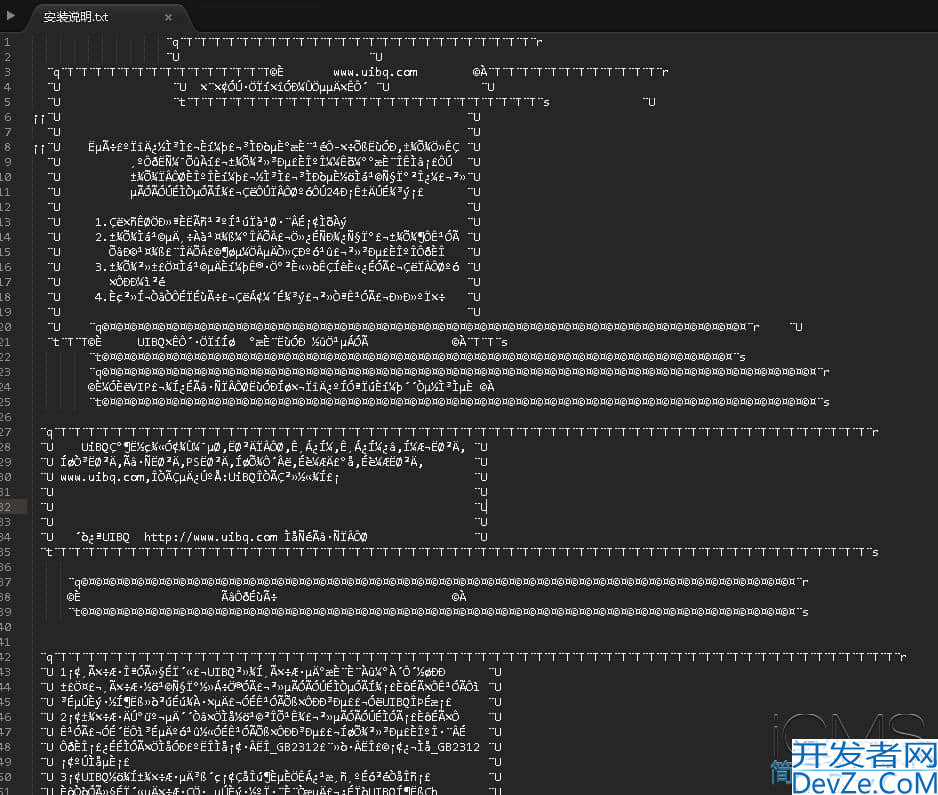SpringQuartz集群支持JDBC存储与分布式执行的最佳实践
目录
- 引言
- 一、Quartz集群架构原理
- 1.1 集群模式基本原理
- 1.2 JDBC存储机制
- 二、SpringQuartz集群配置
- 2.1 核心依赖与数据库准备
- 2.2 Quartz集群配置详解
- 2.3 SpringBoot自动配置方式
- 三、分布式Job的设计与实现
- 3.1 幂等性设计
- 3.2 负载均衡策略
- 四、性能优化与最佳实践
- 4.1 数据库优化
- 4.2 集群扩展与监控
- 总结
引言
在企业级应用中,定时任务的可靠性和高可用性至关重要。单机Quartz调度虽然简单易用,但存在单点故障风险,无法满足大规模系统的需求。SpringQuartz集群模式通过JDBC存储与分布式执行机制解决了这些问题,实现了任务调度的负载均衡、故障转移和水平扩展。本文将详细介绍SpringQuartz集群支持的实现原理、配置方法和最佳实践,助力开发者构建稳定可靠的分布式调度系统。
一、Quartz集群架构原理
1.1 集群模式基本原理
Quartz集群基于数据库锁实现协调机制,所有集群节点共享同一数据库,通过行级锁避免任务重复执行。每个节点启动时,向数据库注册自己并获取可执行的任务。集群中的"领导者选举"机制确保某些关键操作(如触发器检查)只由一个节点执行,从而减少数据库压力。这种设计既保证了任务不会遗漏或重复执行,又允许系统进行水平扩展。
// Quartz集群架构示意图(代码表示) /* * ┌─────────────────┐ ┌─────────────────┐ ┌─────────────────┐ * │ Quartz Node 1 │ │ Quartz Node 2 │ │ Quartz Node 3 │ * │ ┌─────────────┐ │ │ ┌─────────────┐ │ │ ┌─────────────┐ │ * │ │ Scheduler │ │ │ │ Scheduler │ │ │ │ Scheduler │ │ * │ └─────────────┘ │ │ └─────────────┘ │ │ └─────────────┘ │ * └────────┬────────┘ └────────┬────────┘ └────────┬────────┘ * │ │ │ * │ │ │ * v v v * ┌─────────────────────────────────────────────────────────┐ * │ 共享数据库存储 │ * │ ┌───────────────┐ ┌───────────────┐ ┌───────────────┐ │ * │ │ QRTZ_TRIGGERS │ │ QRTZ_JOBS │ │ QRTZ_LOCKS │ │ * │ └───────────────┘ └───────────────┘ └───────────────┘ │ * └─────────────────────────────────────────────────────────┘ */
1.2 JDBC存储机制
Quartz集群依赖JDBC JobStore(具体实现为JobStoreTX或JobStoreCMT)进行状态持久化。系统使用11张表存储所有调度信息,包括任务、触发器、执行历史等。关键表包括QRTZ_TRIGGERS(触发器信息)、QRTZ_JOB_DETAILS(任务详情)、QRTZ_FIRED_TRIGGERS(已触发任务)和QRTZ_LOCKS(集群锁)。数据库操作通过行级锁确保并发安全,是集群协作的基础。
// Quartz数据库表核心关系示意
public class QuartzSchema {
/*
* QRTZ_JOB_DETAILS - 存储JobDetail信息
* 字段: JOB_NAME, JOB_GROUP, DESCRIPTION, JOB_CLASS_NAME, IS_DURABLE...
*
* QRTZ_TRIGGERS - 存储Trigger信息
* 字段: TRIGGER_NAME, TRIGGER_GROUP, JOB_NAME, JOB_GROUP, NEXT_FIRE_TIME...
*
* QRTZ_CRON_TRIGGERS - 存储Cron触发器特定信息
* 字段: TRIGGER_NAME, TRIGGER_GROUP, CRON_EXPRESSION...
*
* QRTZ_FIRED_TRIGGERS - 存储已触发的Trigger信息
* 字段: EN编程客栈TRY_ID, TRIGGER_NAME, TRIGGER_GROUP, INSTANCE_NAME, FIRED_TIME...
*
* QRTZ_SCHEDULER_STATE - 存储集群中的调度器状态
* 字段: INSTANCE_NAME, LAST_CHECKIN_TIME, CHECKIN_INTERVAL...
*
* QRTZ_LOCKS - 集群锁信息
* 字段: LOCK_NAME (如TRIGGER_Access, JOB_ACCESS, CALENDAR_ACCESS...)
*/
}
二、SpringQuartz集群配置
2.1 核心依赖与数据库准备
配置SpringQuartz集群的第一步是引入必要依赖并准备数据库结构。Spring Boot应用需要添加spring-boot-starter-quartz与数据库驱动依赖。数据库结构初始化可以通过Quartz提供的SQL脚本完成,不同数据库有对应的脚本版本。Spring Boot 2.0以上版本可以通过配置自动初始化Quartz表结构,简化了部署过程。
// Maven依赖配置
/*
<dependencies>
<!-- Spring Boot Starter Quartz -->
<dependency>
<groupId>org.springframework.boot</groupId>
<artifactId>spring-boot-starter-quartz</artifactId>
</dependency>
<!-- 数据库驱动 (以mysql为例) -->
<dependency>
<groupId>mysql</groupId>
<artifactId>mysql-connector-Java</artifactId>
<scope>runtime</scope>
</dependency>
<!-- 数据源 -->
<dependency>
<groupId>org.springframework.boot</groupId>
<artifactId>spring-boot-starter-jdbc</artifactId>
</dependency>
</dependencies>
*/
// 数据库初始化配置 (application.properties)
/*
# 自动初始化Quartz表结构
spring.quartz.jdbc.initialize-schema=always
# 也可以设置为never,手动执行SQL脚本
# spring.quartz.jdbc.initialize-schema=never
*/
2.2 Quartz集群配置详解
SpringQuartz集群配置的核心是设置JobStore类型为JobStoreTX,并启用集群模式。配置包括实例标识、调度器名称、数据源等。集群线程池配置需要考虑系统负载和资源情况,避免过多线程导致数据库连接耗尽。故障检测时间间隔(clusterCheckinInterval)对集群敏感度有重要影响,需要根据网络环境合理设置。
// Spring Boot中的Quartz集群配置
@Configuration
public class QuartzClusterConfig {
@Bean
public SchedulerFactoryBean schedulerFactoryBean(DataSource dataSource, JobFactory jobFactory) {
SchedulerFactoryBean factory = new SchedulerFactoryBean();
// 设置数据源
factory.setDataSource(dataSource);
// 使用自定义JobFactory,支持Spring依赖注入
factory.setJobFactory(jobFactory);
// Quartz属性配置
Properties props = new Properties();
props.put("org.quartz.scheduler.instanceName", "ClusteredScheduler");
props.put("org.quartz.scheduler.instanceId", "AUTO"); // 自动生成实例ID
// JobStore配置 - 使用JDBC存储
props.put("org.quartz.jobStore.class", "org.quartz.impl.jdbcjobstore.JobStoreTX");
props.put("org.quartz.jobStore.driverDelegateClass", "org.quartz.impl.jdbcjobstore.StdJDBCDelegate");
props.put("org.quartz.jobStore.dataSource", "quartzDataSource");
// 集群配置
props.put("org.quartz.jobStore.isClustered", "true");
props.put("org.quartz.jobStore.clusterCheckinInterval", "20000"); // 故障检测间隔(毫秒)
// 线程池配置
props.put("org.quartz.threadPool.class", "org.quartz.simpl.SimpleThreadPool");
props.put("org.quartz.threadPool.threadCount", "10");
props.put("org.quartz.threadPool.threadPriority", "5");
factory.setQuartzProperties(props);
// 启动时延迟5秒,避免应用未完全启动时执行定时任务
factory.setStartupDelay(5);
return factory;
}
// 自定义JobFactory,支持Spring依赖注入
@Bean
public JobFactory jobFactory(ApplicationContext applicationContext) {
AutowiringSpringBeanJobFactory jobFactory = new AutowiringSpringBeanJobFactory();
jobFactory.setApplicationContext(applicationContext);
return jobFactory;
}
}
// Spring Bean感知的JobFactory实现
public class AutowiringSpringBeanJobFactory extends SpringBeanJobFactory implements ApplicationContextAware {
private transient AutowireCapableBeanFactory beanFactory;
@Override
public void setApplicationContext(ApplicationContext context) throws BeansException {
beanFactory = context.getAutowireCapableBeanFactory();
}
@Override
protected Object createJobInstance(TriggerFiredBundle bundle) throws Exception {
final Object job = super.createJobInstance(bundle);
beanFactory.autowireBean(job); // 对Job实例进行依赖注入
return job;
}
}
2.3 SpringBoot自动配置方式
Spring Boot 2.0以上版本极大简化了Quartz集群配置。通过application.properties或application.yml文件,可以直接设置Quartz相关属性,无需编写JajavascriptvaConfig。自动配置会创建必要的Bean,包括Scheduler、JobDetail等。这种方式适合大多数标准场景,但对于特殊需求,仍可通过自定义配置类进行扩展。
// SpringBoot自动配置示例 (application.yml)
/*
spring:
quartz:
job-store-type: jdbc # 使用JDBC存储
jdbc:
initialize-schema: always # 自动初始化表结构
properties:
org.quartz.scheduler.instanceName: ClusteredScheduler
org.quartz.scheduler.instanceId: AUTO
org.quartz.jobStore.class: org.quartz.impl.jdbcjobstore.JobStoreTX
org.quartz.jobStore.driverDelegateClass: org.quartz.impl.jdbcjobstore.StdJDBCDelegate
org.quartz.jobStore.isClustered: true
org.quartz.jobStore.clusterCheckinInterval: 20000
org.quartz.threadPool.class: org.quartz.simpl.SimpleThreadPool
org.quartz.threadPool.threadCount: 10
org.quartz.threadPool.threadPriority: 5
datasource:
url: jdbc:mysql://localhost:3306/quartz_db?useSSL=false
username: root
password: password
driver-class-name: com.mysql.cj.jdbc.Driver
*/
三、分布式Job的设计与实现
3.1 幂等性设计
在分布式环境中,任务的幂等性设计至关重要。尽管Quartz集群机制能避免同一任务被多节点同时执行,但网络故障或节点重启可能导致任务重复触发。幂等性设计确保即使任务多次执行,也不会产生不良后果。实现方式包括使用执行标记、增量处理和分布式锁等机制。
// 幂等性Job设计示例
@Component
public class IdempotentBATchJob implements Job {
@Autowired
private JobExecutionRepository repository;
@Autowired
private BatchProcessor batchProcessor;
@Override
public void execute(JobExecutionContext context) throws JobExecutionException {
// 获取任务标识
JobKey jobKey = context.getJobDetail().getKey();
String executionId = jobKey.getName() + "-" + System.currentTimeMillis();
// 创建执行记录
JobExecution execution = new JobExecution();
execution.setExecutionId(executionId);
execution.setJobName(jobKey.getName());
execution.setStartTime(new Date());
execution.setStatus("RUNNING");
try {
// 保存执行记录,同时作为分布式锁检查
if (!repository.saveIfNotExists(execution)) {
// 任务正在其他节点执行,跳过本次执行
return;
}
// 获取上次执行点位
String lastProcessedId = repository.getLastProcessedId(jobKey.getName());
// 增量处理数据
ProcessResult result = batchProcessor.processBatch(lastProcessedId, 1000);
// 更新处理点位
repository.updateLastProcessedId(jobKey.getName(), result.getLastId());
// 更新执行状态
execution.setStatus("COMPLETED");
execution.setEndTime(new Date());
execution.setProcessedItems(result.getProcessedCount());
repository.update(execution);
} catch (Exception e) {
// 更新执行失败状态
execution.setStatus("FAILED");
execution.setEndTime(new Date());
execution.setErrorMessage(e.getMessage());
repository.update(execution);
throw new JobExecutionException(e);
}
}
}
3.2 负载均衡策略
Quartz集群默认采用随机负载均衡,即任务可能在任何活跃节点上执行。对于需要特定资源的任务,可以实现自定义负载均衡策略。常见方式包括基于节点ID的哈希分配、基于资源亲和性的定向调度等。在Spring环境中,可以通过自定义Job监听器和上下文数据实现高级调度逻辑。
// 自定义负载均衡策略示例
@Component
public class ResourceAwareJobListener implements JobListener {
@Autowired
private ResourceChecker resourceChecker;
@Override
public String getName() {
return "resourceAwareJobListener";
}
@Override
public void jobToBeExecuted(JobExecutionContext context) {
// 获取当前节点ID
String instanceId = context.getScheduler().getSchedulerInstanceId();
// 获取任务所需资源
JobDataMap dataMap = context.getJobDetail().getJobDataMap();
String requiredResource = dataMap.getString("requiredResource");
// 检查当前节点是否适合执行该任务
if (!resourceChecker.isResourceAvailable(instanceId, requiredResource)) {
// 如果资源不可用,抛出异常阻止执行
throw new JobExecutionException("Required resource not available on this node");
}
}
@Override
public void jobExecutionVetoed(JobExecutionContext context) {
// 实现必要的逻辑
}
@Override
public void jobWasExecuted(JobExecutionContext context, JobExecutionException jobException) {
// 实现必要的逻辑
}
}
// 注册全局Job监听器
@Configuration
public class QuartzListenerConfig {
@Autowired
private ResourceAwareJobListener resourceAwareJobListener;
@Bean
public SchedulerListener schedulerListener() {
return new CustomSchedulerListener();
}
@PostConstruct
public void registerListeners() throws SchedulerException {
Scheduler scheduler = schedulerFactoryBean.getScheduler();
scheduler.getListenerManager().addJobListener(resourceAwareJobListener);
}
}
四、性能优化与最佳实践
4.1 数据库优化
Quartz集群性能很大程度上取决于数据库性能。首先应对关键表如QRTZ_TRIGGERS、QRTZ_FIRED_TRIGGERS添加适当索引。其次,定期清理历史数据避免表过大影响查询性能。对于高负载系统,可考虑数据库读写分离或分表策略。连接池配置也需根据任务量和集群节点数适当调整,避免连接耗尽。
// 索引优化和表维护示例
/*
-- 常用AFcSdLBX索引优化(部分数据库已默认创建)
CREATE INDEX idx_qrtz_ft_job_group ON QRTZ_FIRED_TRIGGERS(JOB_GROUP);
CREATE INDEX idx_qrtz_ft_job_name ON QRTZ_FIRED_TRIGGERS(JOB_NAME);
CREATE INDEX idx_qrtz_t_next_fire_time ON QRTZ_TRIGGERS(NEXT_FIRE_TIME);
CREATE INDEX idx_qrtz_t_state ON QRTZ_TRIGGERS(TRIGGER_STATE);
-- 数据清理存储过程示例
DELIMITER $$
CREATE PROCEDURE clean_quartz_history()
BEGIN
-- 设置安全期限 (30天前)
SET @cutoff_date = DATE_SUB(NOW(), INTERVAL 30 DAY);
-- 删除过期的触发历史
DELETE FROM QRTZ_FIRED_TRIGGERS
WHERE SCHED_TIME < Unix_TIMESTAMP(@cutoff_date) * 1000;
-- 可以根据需要添加其他清理逻辑
END$$
DELIMITER ;
-- 创建定期执行的事件
CREATE EVENT clean_quartz_history_event
ON SCHEDULE EVERY 1 DAY
DO CALL clean_quartz_history();
*/
// 数据源和连接池配置
@Bean
public DataSource quartzDataSource() {
HikariConfig config = new HikariConfig();
config.setJdbcUrl("jdbc:mysql://localhost:3306/quartz_db");
config.setUsername("root");
config.setPassword("password");
// 连接池大小 = (节点数 * 线程数) + 额外连接
config.setMaximumPoolSize(50);
config.setMinimumIdle(10);
// 设置连接超时
config.setConnectionTimeout(30000);
config.setIdleTimeout(600000);
return new HikariDataSource(config);
}
4.2 集群扩展与监控
Quartz集群的可观测性对运维至关重要。应实现任务执行监控,包括成功率、执行时间分布等指标。常见做法是结合Spring Actuator和Prometheus实现指标收集,通过Grafana可视化。对于大型集群,可考虑使用Misfired策略控制节点失效时的恢复行为,避免任务堆积导致系统过载。
// Quartz集群监控配置
@Configuration
public class QuartzMonitoringConfig {
@Bean
public JobExecutionHistoryListener jobHistoryListener(MeterRegistry registry) {
return new JobExecutionHistoryListener(registry);
}
}
// 任务执行监控实现
public class JobExecutionHistoryListener implements JobListener {
private final MeterRegistry registry;
private final Map<String, Timer> jobTimers = new ConcurrentHashMap<>();
public JobExecutionHistoryListener(MeterRegistry registry) {
this.registry = registry;
}
@Override
public String getName() {
return "jobExecutionHistoryListener";
}
@Override
public void jobToBeExecuted(JobExecutionContext context) {
// 记录任务开始执行
context.put("executionStartTime", System.currentTimeMillis());
}
@Override
public void jobWasExecuted(JobExecutionContext context, JobExecutionException exception) {
String jobName = context.getJobDetail().getKey().toString();
long startTime = (long) context.get("executionStartTime");
long executionTime = System.currentTimeMillis() - startTime;
// 记录执行时间
Timer timer = jobTimers.computeIfAbsent(jobName,
k -> Timer.builder("quartz.job.execution.time")
.tag("job", jobName)
.regis编程ter(registry));
timer.record(executionTime, TimeUnit.MILLISECONDS);
// 记录执行结果
Counter.builder("quartz.job.execution.count")
.tag("job", jobName)
.tag("success", exception == null ? "true" : "false")
.register(registry)
.increment();
// 还可以记录更多指标...
}
@Override
public void jobExecutionVetoed(JobExecutionContext context) {
Counter.builder("quartz.job.execution.vetoed")
.tag("job", context.getJobDetail().getKey().toString())
.register(registry)
.increment();
}
}
总结
SpringQuartz集群通过JDBC存储和分布式执行机制,有效解决了单点故障和扩展性问题。集群实现基于数据库行级锁的协调,所有节点共享任务定义和状态,实现了高可用性。配置集群需要设置合适的存储类型、实例标识和检测间隔,并优化数据库结构。在分布式环境中,任务设计应注重幂等性和负载均衡,确保系统稳定高效。性能优化应从数据库索引、连接池配置和监控策略多方面入手。通过合理配置与最佳实践,SpringQuartz集群能够支撑大规模分布式应用的定时任务需求,显著提升系统可靠性编程客栈和处理能力。
到此这篇关于SpringQuartz集群支持JDBC存储与分布式执行的最佳实践的文章就介绍到这了,更多相关SpringQuartz分布式执行内容请搜索编程客栈(www.devze.com)以前的文章或继续浏览下面的相关文章希望大家以后多多支持编程客栈(www.devze.com)!





 加载中,请稍侯......
加载中,请稍侯......
精彩评论